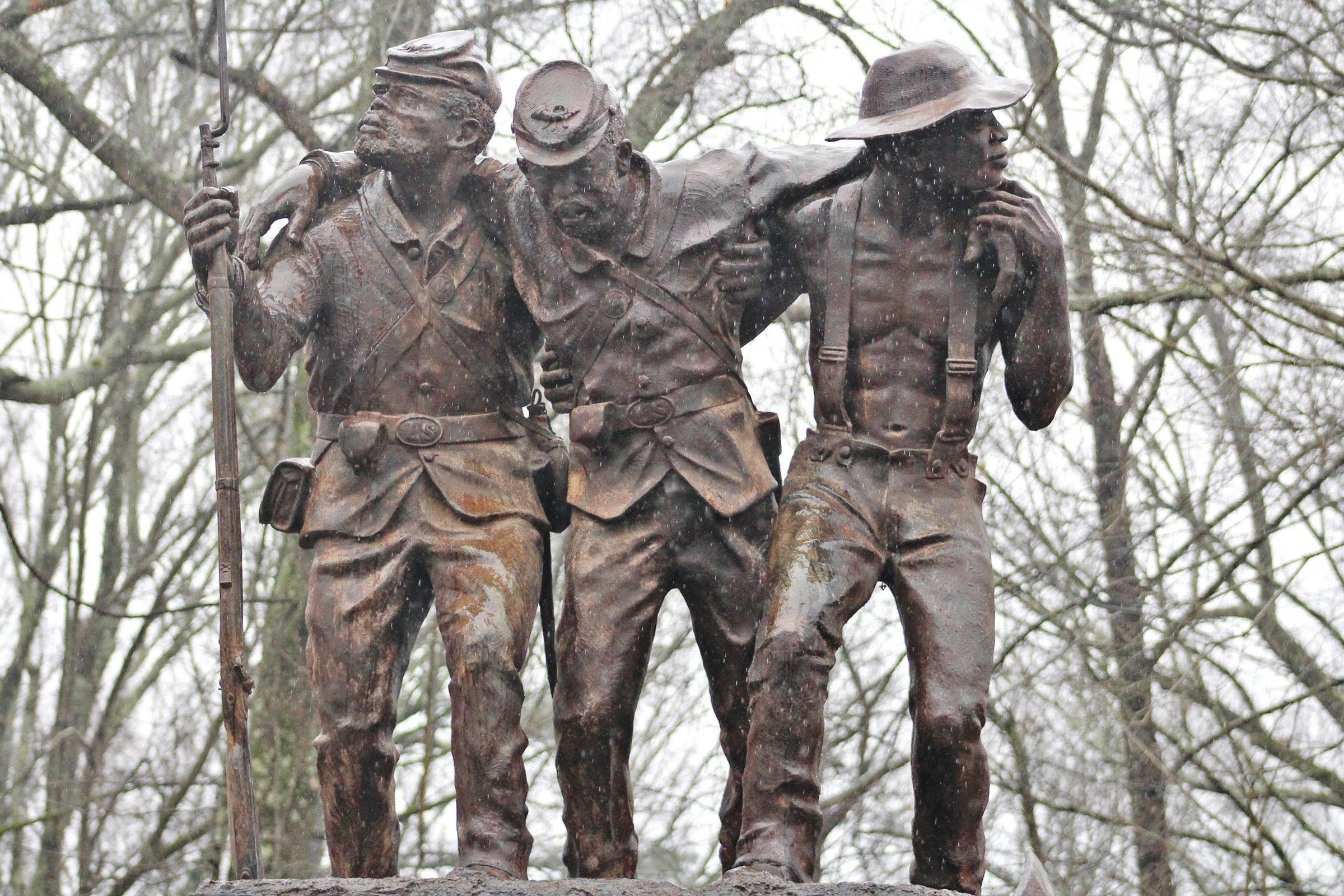SIEGE 160: Milliken’s Bend demonstrates African Americans will fight for Union
Published 8:00 am Saturday, June 10, 2023

- A bronze statue honoring Black soldiers stands atop the Mississippi Colored Troops Monument in the Vicksburg National Military Park. (Ernest Bowker/The Vicksburg Post)
It was the battle that changed the North’s perception of African American soldiers.
The actions of the poorly trained and equipped African American recruits during the Battle of Milliken’s Bend on June 7, 1863, which was about two weeks into Maj. Gen. Ulysses S. Grant’s siege of Vicksburg, showed Union leaders that blacks would fight for the Union and fight well.
Located on the west bank of the Mississippi River in Louisiana, Milliken’s Bend, like the Louisiana town of Lake Providence and Young’s Point, served as supply depots during the early stages of Grant’s campaign to take Vicksburg. When Grant arrived in Vicksburg, he relocated his main supply base to the Chickasaw Bayou Battlefield area and Milliken’s Bend, Lake Providence and Young’s Point became recruiting and training centers for recently recruited African Americans and newly commissioned officers who came from the ranks of experienced non-commissioned officers.
“Many of them (recruits) had only just received their accouterments and they’ve only been training as soldiers for a week, maybe two weeks at most,” said Andrew Miller, lead ranger at the Vicksburg National Military Park.
“So these soldiers that will actually find themselves in battle have the minimal training. At best, they are just now acquiring the skills to even march and load and fire their weapons so they don’t have a lot of time under their belts when the situation presents itself early in the morning of June 7,” Miller said.
Confederate forces in Louisiana never attempted to assault and capture Milliken’s Bend and the other supply depots during the early periods of Grant’s campaign, but with Union forces now threatening Vicksburg, the Confederate War Department and President Jefferson Davis forced Gen. Kirby Smith, the Confederate commander in Louisiana to take action to disrupt Grant’s siege on Vicksburg.
Smith and Confederate Maj. Gen. Richard Taylor, who commanded the District of Western Louisiana, ordered the Texas Division of Maj. Gen. John G. Walker into Madison Parish and Walker sent Brig. Gen. Henry McCulloch’s brigade to strike Milliken’s Bend.
McCulloch’s Brigade attacked Milliken’s Bend at 2:30 a.m. on June 7 with the objective to force the Union Army’s left flank and basically push them into the Mississippi River and effectively destroy it. According to accounts of the battle, the Confederate soldiers actually were carrying a black flag, which meant any white officers who were captured were executed as people that were trying to initiate a slave rebellion. The Black soldiers would be put back into slavery if they were captured.”
After moving the pickets back, the Confederates clashed with the minimally trained African-American soldiers and the fighting was soon hand-to-hand.
“It’s a brutal, brutal, battle,” Miller said, adding the African American soldiers hung on assisted by a white regiment that arrived as reinforcements and the support of guns of the gunboats USS Choctaw and Lexington.
The Confederates fell back and conceded the battlefield to the African brigade.
The African American troops were commended by McCulloch after Milliken’s Bend, according to the book “The Sable Arm.”
“The line was formed under heavy fire from the enemy and the troops charged the breastworks, carrying it instantly, killing and wounding many of the enemy by their fire as well as their bayonet,” McCullough wrote. “This charge was resisted by the negro portion of the enemy’s force with considerable obstinacy, while the white or true Yankee portion ran like whipped curs almost as soon as the charge was ordered.”
“Milliken’s Bend is the battle that changes the northern populace’s opinion that African Americans will make good soldiers and indeed fight, which was something that they didn’t necessarily think would’ve happened without this example,” Miller said. “It was all African Americans fighting. So this fight is the one that proves that these soldiers will fight and, and they will fight very well.”
Also during this week, Union troops continued advancing approach trenches toward the Confederate lines at Vicksburg and Confederate Gen. John C. Pemberton grew increasingly concerned about the siege and continued looking east in hopes of getting help from Gen. Joseph E. Johnston.






